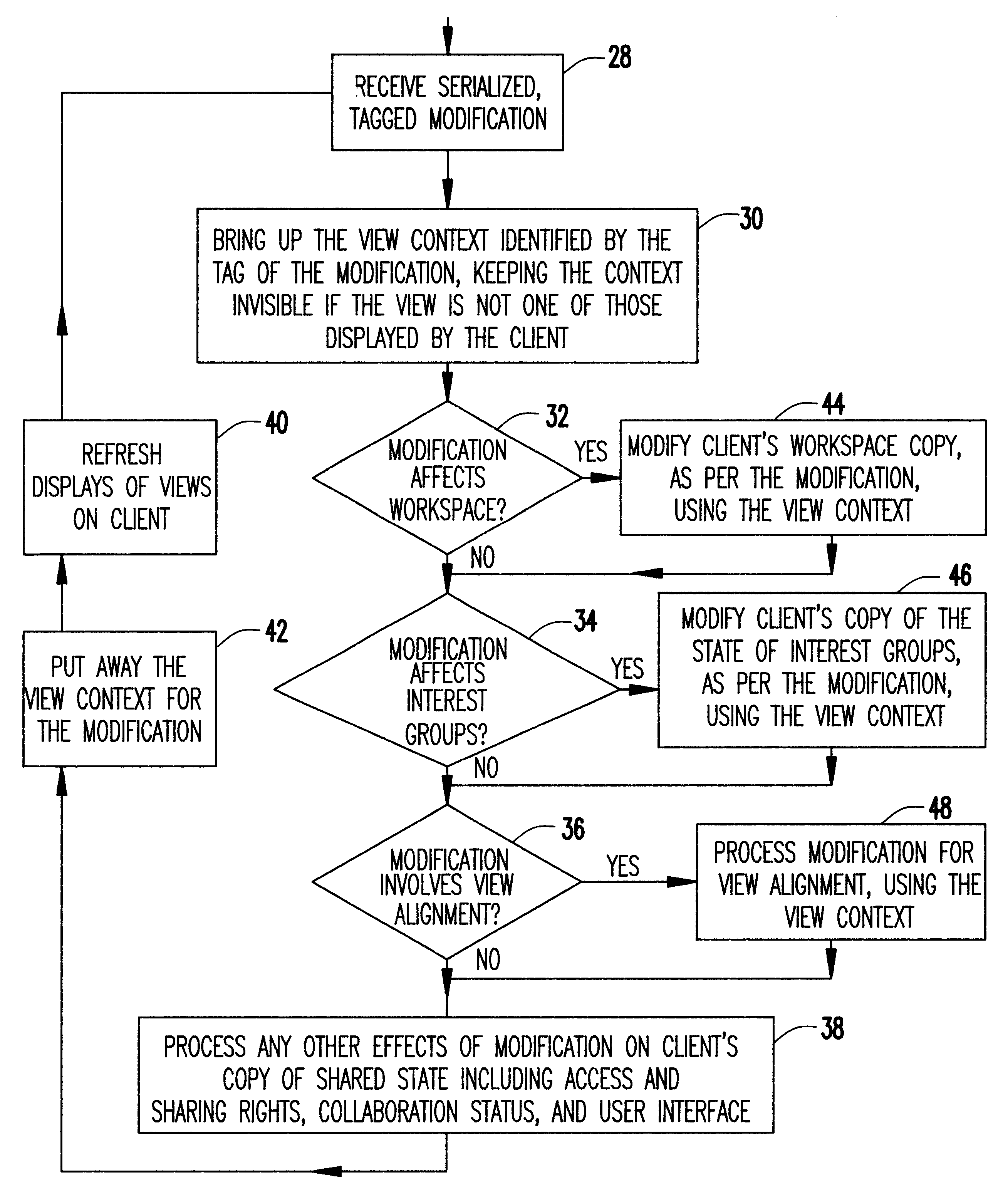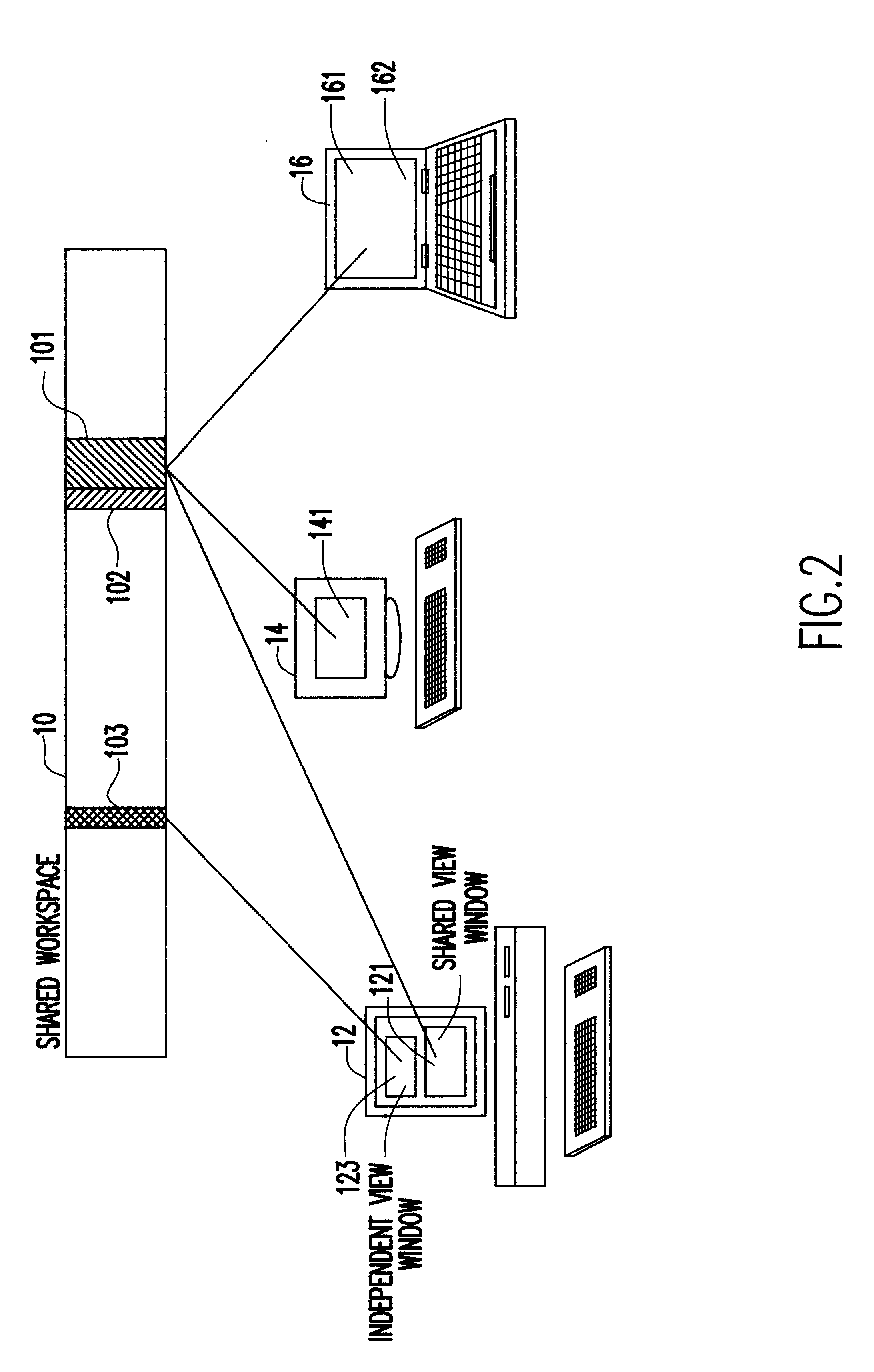Shared and independent views of shared workspace for real-time collaboration
a shared workspace and collaboration technology, applied in the field of collaborative work, can solve the problems of significant restrictions on the kind of shared workspace, and all participants are allowed
- Summary
- Abstract
- Description
- Claims
- Application Information
AI Technical Summary
Benefits of technology
Problems solved by technology
Method used
Image
Examples
Embodiment Construction
The invention is a real-time collaboration system that builds on conventional technology available for application-sharing-based, real-time-collaboration systems. Conventional technology for any application-sharing-based, real-time-collaboration system is generally comprised of:
1. A means for generating a set of frontend processes (clients) for any session of real-time collaboration supported by the system. In any such session, the session's clients provide synchronous access to the session's shared workspace to the participants of the session. The client processes rely on the single-user, noncollaborative, software application that is ordinarily used to access the workspace in a natural (i.e., sequential, isolated, noncollaborative) manner. Each client may support one or more different kinds of workspaces. The real-time-collaboration system may generate more than one kind of a client. Thus, the set of workspace kinds supported by the collaboration system is the union of the sets of...
PUM
 Login to View More
Login to View More Abstract
Description
Claims
Application Information
 Login to View More
Login to View More - R&D
- Intellectual Property
- Life Sciences
- Materials
- Tech Scout
- Unparalleled Data Quality
- Higher Quality Content
- 60% Fewer Hallucinations
Browse by: Latest US Patents, China's latest patents, Technical Efficacy Thesaurus, Application Domain, Technology Topic, Popular Technical Reports.
© 2025 PatSnap. All rights reserved.Legal|Privacy policy|Modern Slavery Act Transparency Statement|Sitemap|About US| Contact US: help@patsnap.com



